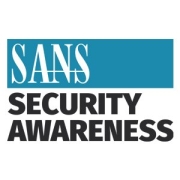Security Awareness Training is crucial for safeguarding organizations against cyber threats. It empowers employees with the knowledge and skills to recognize and respond to potential security risks effectively, enhancing overall cybersecurity posture.
This training involves educating employees on best practices in cybersecurity, including recognizing phishing attempts, understanding data protection policies, and implementing secure password protocols. It helps create a culture of security within an organization, ensuring that all staff members understand their role in defending against cyber threats. By tailoring sessions to specific organizational needs, it helps address the unique challenges faced by different industries.
What are the critical features of Security Awareness Training?In finance and healthcare sectors, where data sensitivity is paramount, Security Awareness Training is implemented to address specific compliance and regulatory requirements. These programs focus on phishing attempts, data encryption practices, and safe handling of sensitive information. In retail, training often emphasizes secure payment processing and safeguarding customer data.
This category is helpful for organizations as it fosters a proactive security culture among employees. Employees become aware of potential threats and understand the importance of their role in protecting the organization, thereby reducing the likelihood of successful cyber attacks.














































Security Awareness Training empowers your team to recognize and respond effectively to phishing attempts. By simulating real-world phishing attacks, you can teach employees to identify suspicious emails and links, reducing the chance of unauthorized access to sensitive information. This proactive approach not only increases employee vigilance but also builds a robust security culture within your organization.
What are the key components of an effective Security Awareness Training program?A comprehensive Security Awareness Training program should cover several critical topics: understanding current cyber threats, recognizing social engineering tactics, implementing strong password practices, and ensuring data privacy. Interactive training modules, regular security updates, and assessments help reinforce these concepts. This combination keeps your team informed and prepared to counteract potential threats.
How do you measure the success of a Security Awareness Training program?Success in Security Awareness Training can be evaluated using various metrics: employee engagement levels, reduction in the number of security incidents, phishing simulation results, and feedback from participants. Tracking these indicators over time helps assess improvements and identify areas for further enhancement. A successful program will exhibit an upward trend in comprehension and application of best practices.
Why is continuous learning important in Security Awareness Training?Continuous learning is critical to keeping up with evolving cyber threats. Regularly updating training materials with the latest threat information and emerging attack vectors ensures employees remain vigilant. This approach helps reinforce previously learned skills and introduces new strategies for mitigating risks, ultimately building a resilient organization capable of adapting to the dynamic security landscape.
What role does a Security Awareness Training provider play in enhancing organizational security?A Security Awareness Training provider offers expertise and resources to develop and implement a tailored training program. These providers deliver specialized knowledge, curated content, and technological tools necessary to educate employees effectively. Working with a reputable provider can ensure your program aligns with industry standards and best practices, maximizing the impact of your security efforts.